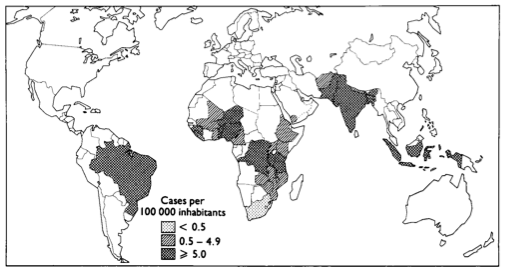Smallpox epidemiology and demographics
|
Smallpox Microchapters |
|
Diagnosis |
|---|
|
Treatment |
|
Case Studies |
|
Smallpox epidemiology and demographics On the Web |
|
American Roentgen Ray Society Images of Smallpox epidemiology and demographics |
|
Risk calculators and risk factors for Smallpox epidemiology and demographics |
Editor-In-Chief: C. Michael Gibson, M.S., M.D. [1]; Associate Editor(s)-in-Chief: João André Alves Silva, M.D. [2]
Overview
Prevalence
Incidence

The number of cases reported to the international health authorities varied greatly in accuracy. The data obtained from non-endemic countries, with good health services were probably more accurate. According to the Intensified Smallpox Eradication Programme, the reported incidence amounted to 1-2% of the reality, therefore it is not possible to obtain a true number on the incidence.
Even in endemic regions there were periods called epidemic years in which the incidence was much higher. For this difference several possibilities were evoked, such as:
- Viability of the virus
- Changes in susceptibility of the host
- Social factors such as dispersion of the population
Age
Smallpox affected mainly:[1]
- Children
- Young adults
Gender
Smallpox affected males and females equally.